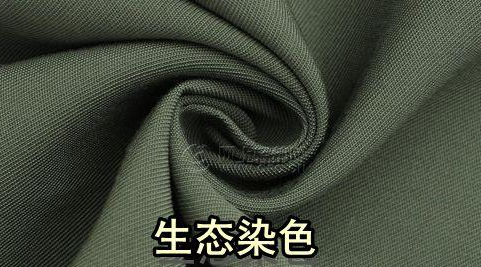As consumers become more and more concerned about health and environmental protection, clothing and home furnishing brands have also listed these two points as important indicators. Recommended in this issue is ecological dyeing, a dyeing technology that does not have harmful effects on the human body and the environment.

What is ecological dyeing?
Ecological dyeing refers to dyeing that is based on a safer and more complete production and processing chain. Fiber materials, dyes and chemicals are environmentally friendly and do not have harmful effects on the human body and the environment. technology. Its production and processing process is safe and ecological, and will not destroy resources or pollute the environment; it is efficient and highly automated; its products are safe, healthy and multi-functional, and the entire production chain is strictly monitored. In order to establish a clean dyeing processing chain, it is necessary to work together from the entire process of raw materials, product design, processing and application to establish a clean dyeing production system.
What are the ecological dyeing methods?
1. Purely natural plant dyeing. Using purely natural plant dyes, biological dyes and some natural mineral dyes, no chemical synthesis additives are used during the dyeing process. It is the safest and most environmentally friendly dyeing process, especially for ecological fiber dyeing such as organic cotton. Excellent effect, ensuring the organic nature of textiles.
2. Bionic dyeing. Biomimetic dyeing is a new ecological dyeing approach that imitates the structure, distribution and function of pigments in organisms.
3. Super Critical carbon dioxide fluid dyeing (SFD). This is a non-aqueous dyeing method. Supercritical carbon dioxide fluid dyeing is suitable for chemical fibers such as polyester, nylon, spandex and acetate fiber. The loss rate during the dyeing process is only 2% to 5%, and has the advantages of no pollution and low energy consumption.
4. Short process dyeing. Short-process dyeing technology greatly improves production efficiency, reduces technical processes, greatly improves product quality stability, and reduces dyeing costs.
5. Electrochemical staining. This is a brand-new dyeing method that uses electrochemical cathode reduction to replace the transfer dye reduction dyeing process. It can not only maintain the advantages of vat dyes, but also the dye solution can be reused, saving 80% of chemical reagents and a large amount of water, and reducing the cost of dyeing. Dyeing costs also greatly reduce the wastewater treatment costs of dyeing plants.
6. Reactive staining. Although many environmentally friendly products have been developed for reactive dyes, the dye utilization rate is low. Reactive dyes have low directivity to cellulose fibers. Hydrolysis will occur during dyeing, and the loss rate reaches 50%.
6. Low-salt dyeing. In order to solve the electrolyte pollution problem caused by adding a large amount of medium-sized electrolytes when reactive dyes are dip-dyed, low-salt dyeing reactive dyes and dyeing processes have been developed at home and abroad.
7. Deep and dense dyeing. More and more reactive dyes are used to dye dark colors, especially navy blue and black. In order to reduce dyeing pollution, you can use Deep color dye to control.
8. Fast dyeing. Methods to increase color fastness include selecting reactive dyes with good fastness; modifying the fiber, such as physical modification or chemical modification, increasing the degree of dye reaction, introducing components that protect the dye on the fiber, etc.; Use appropriate color-fixing agents or cross-linking agents for processing.
9. Other new dyeing technologies. There are other niche ecological dyeing methods.





